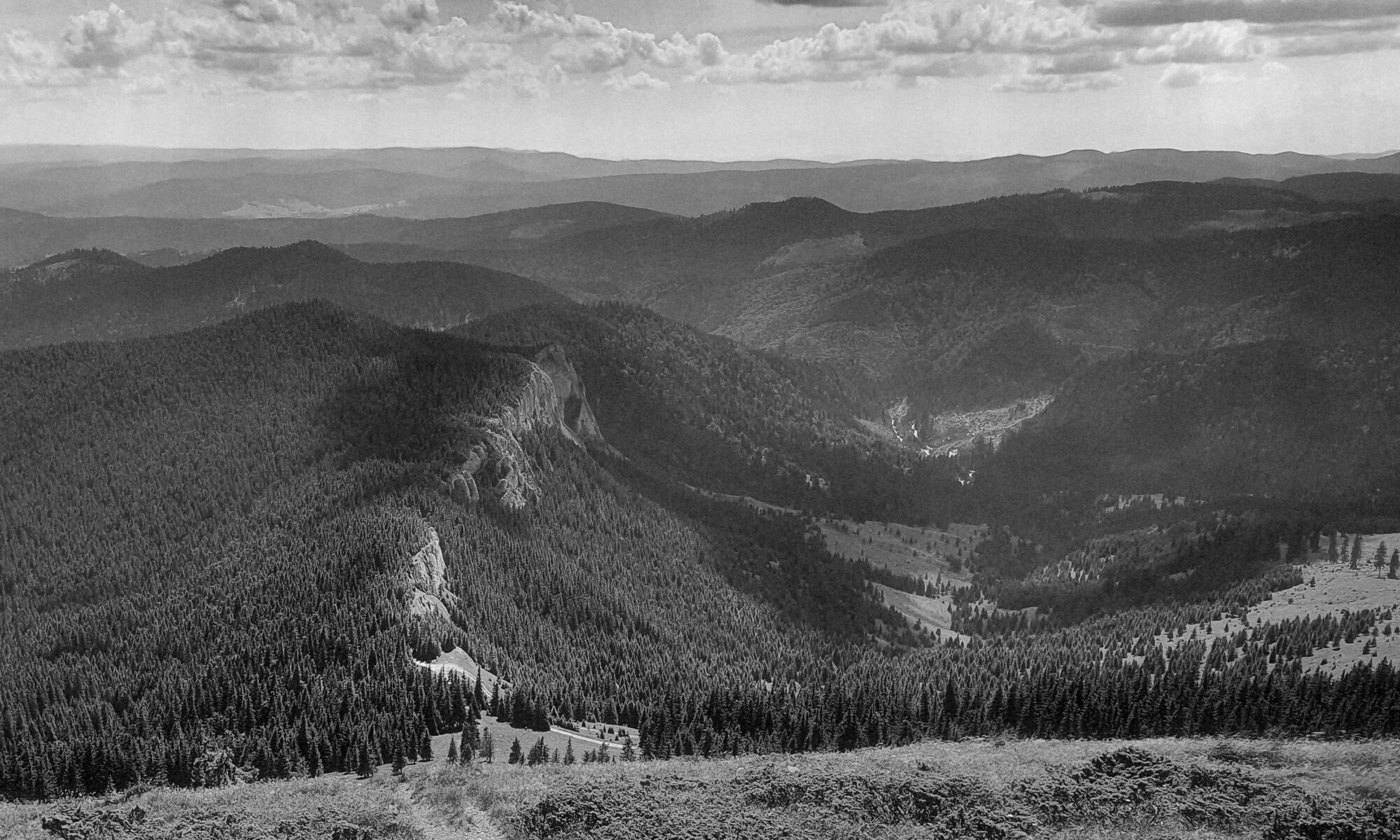THE FOAL MOUNTAINS. How long it has been since I visited them. First wonder at Carpathian expanses. Carved farmstead gates in Draganu Valley; old women on doorsteps weaving, embroidering. First time a-roving. First time struggling up steep wooded hillsides toward visions of a path pointed out in fog by a shepherd’s hand. Ceaţa the shepherd called it. Fog. Who knows if the distant Slovak town of Čadca, nestled among Wallachian mountains, has anything to do with the word.
We left nothing out on our trek across the Western Carpathians; we even tried our luck with the wild horses that gallop there freely in herds. White horses, brown ravines, black horses, white clouds, chestnut horses, black forests. Green grass, dappled horses. Pastures as far as the eye can see, no sight of a shepherd in three days. But the crack of shepherds’ whips rings out across Vlădeasa from north to south.
A camp of miserable-looking shelters guarded by a sun-bleached skull. Water on ridges vanishes into mossy troughs. Like animals we eat, like animals we sleep, soaking up Carpathian freedom. If, after night, the morning sun shows its face, it spreads a silky emerald canopy out over the mountain plains. Three layers of clouds, three steps to heaven. The ridge leads us onward to the cliffs of Bihor. At the mountains’ edge not far from the headwaters of the Draganu, we turn off the ridge, descending southward from an altitude of sixteen hundred meters to where Padiş and the watery karst fortresses of Bihor await us.
Vlădeasa: wooded grassy expanses for a thousand summer fires, unpopulated.
